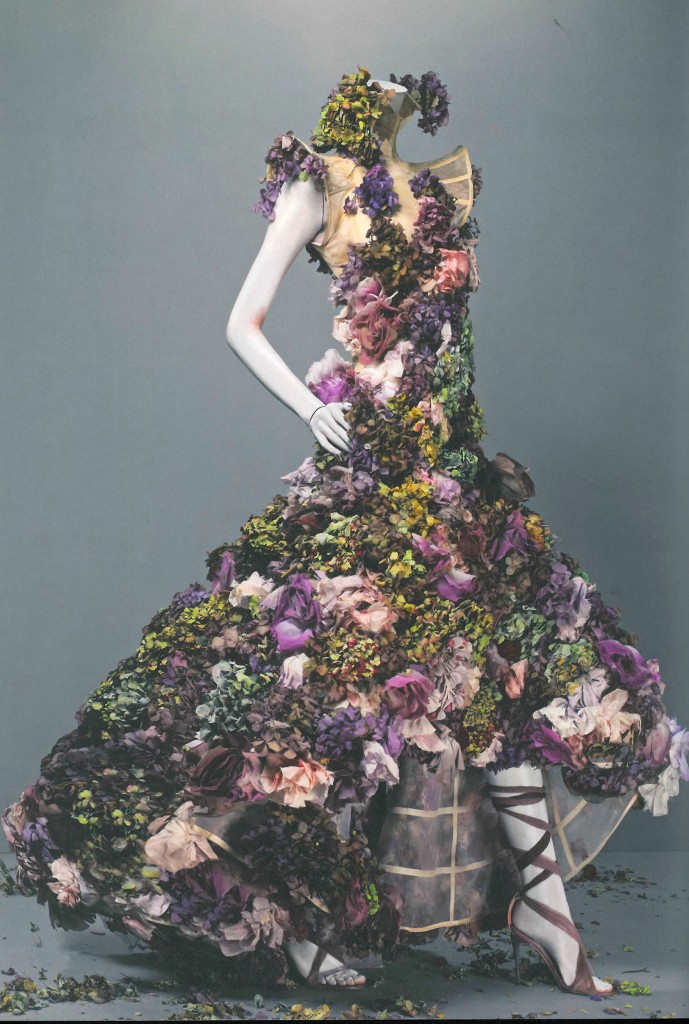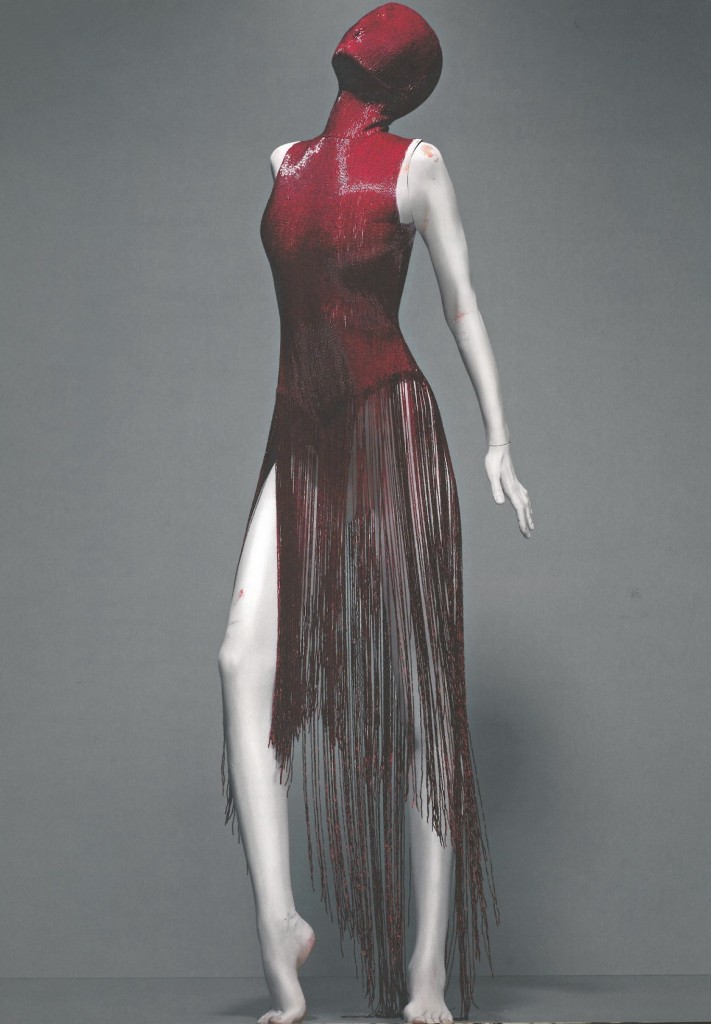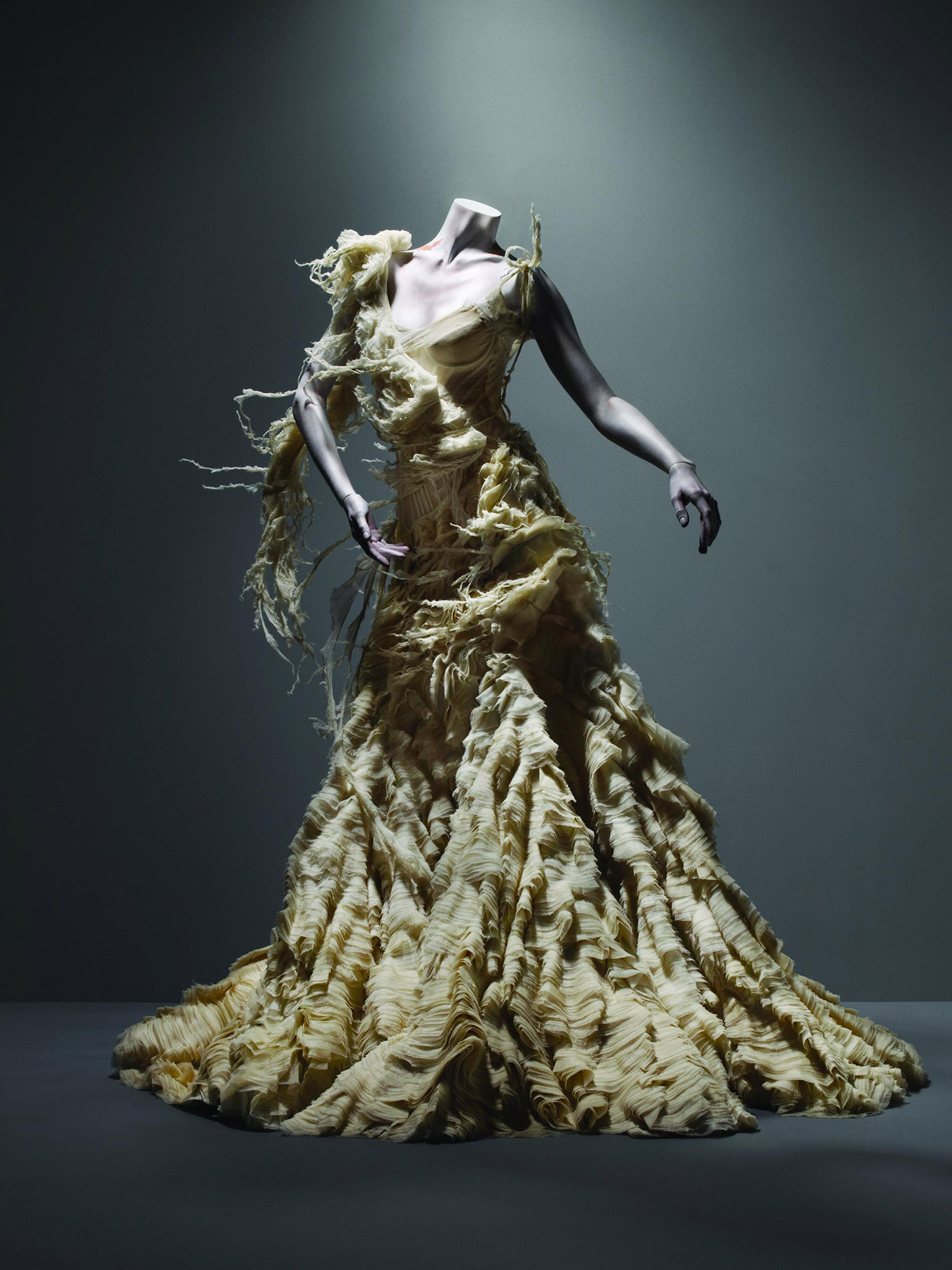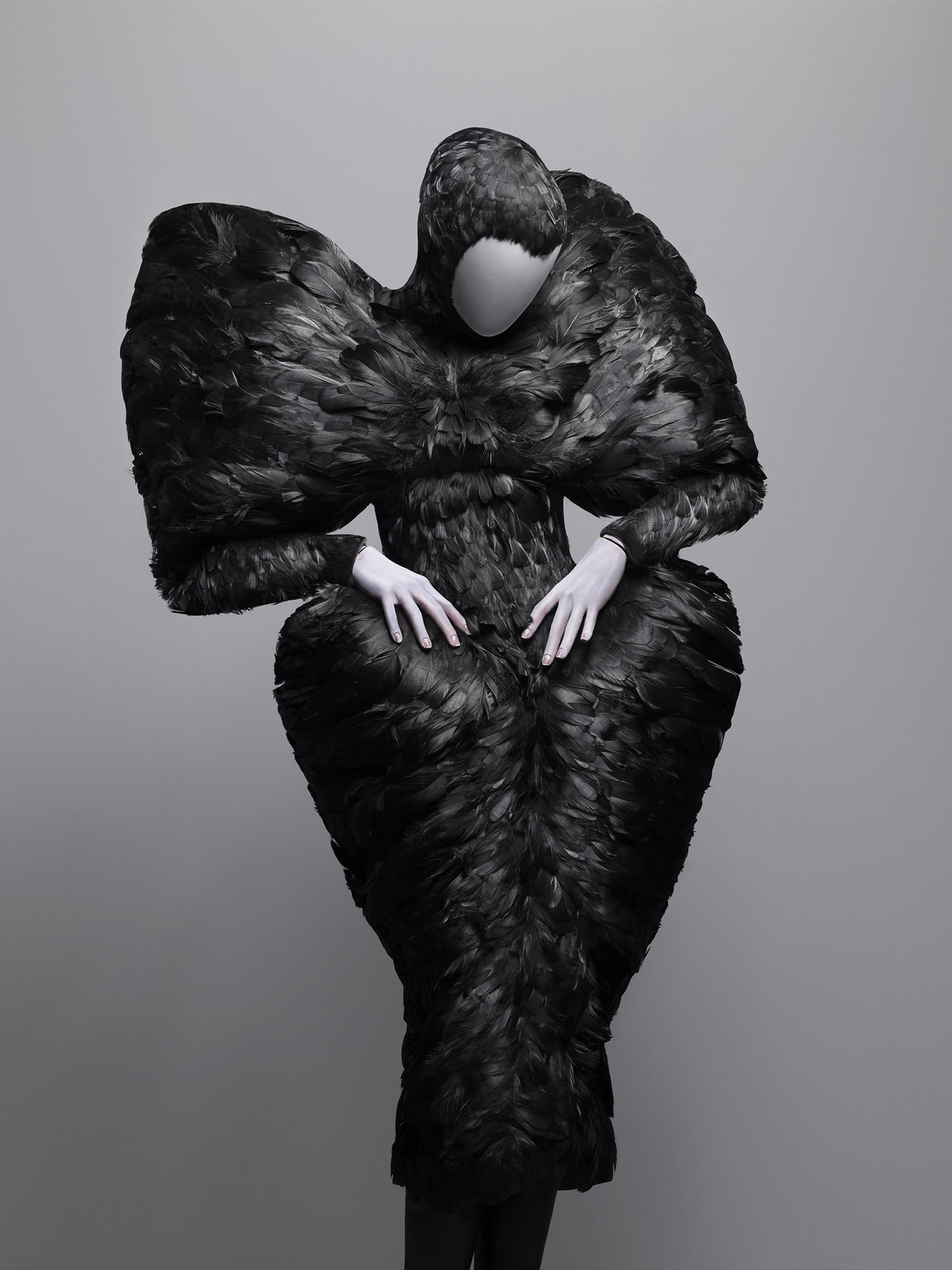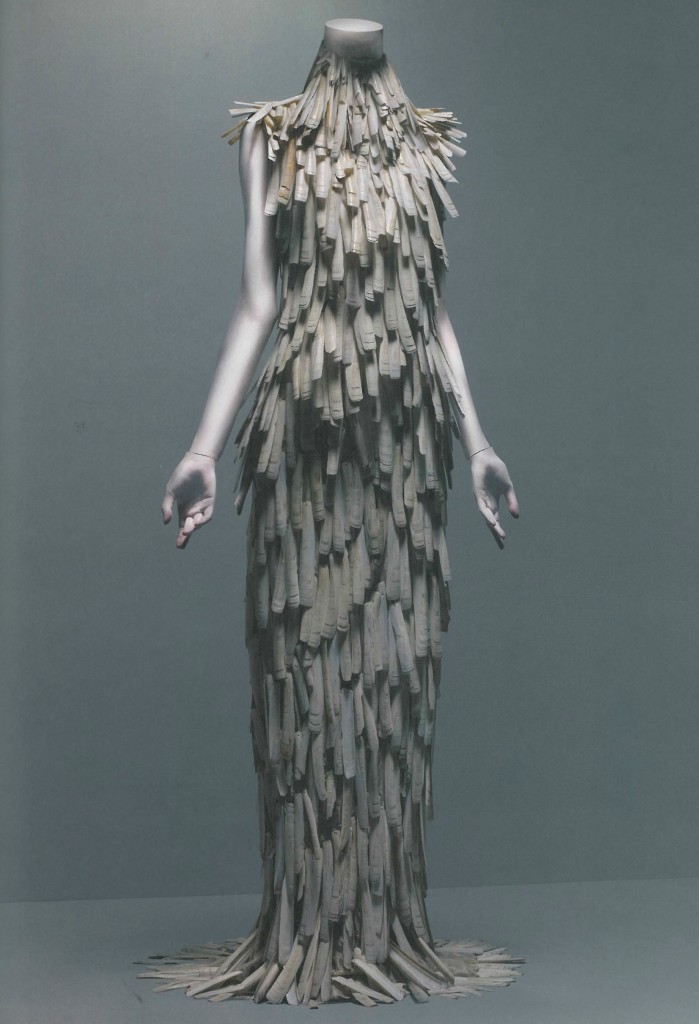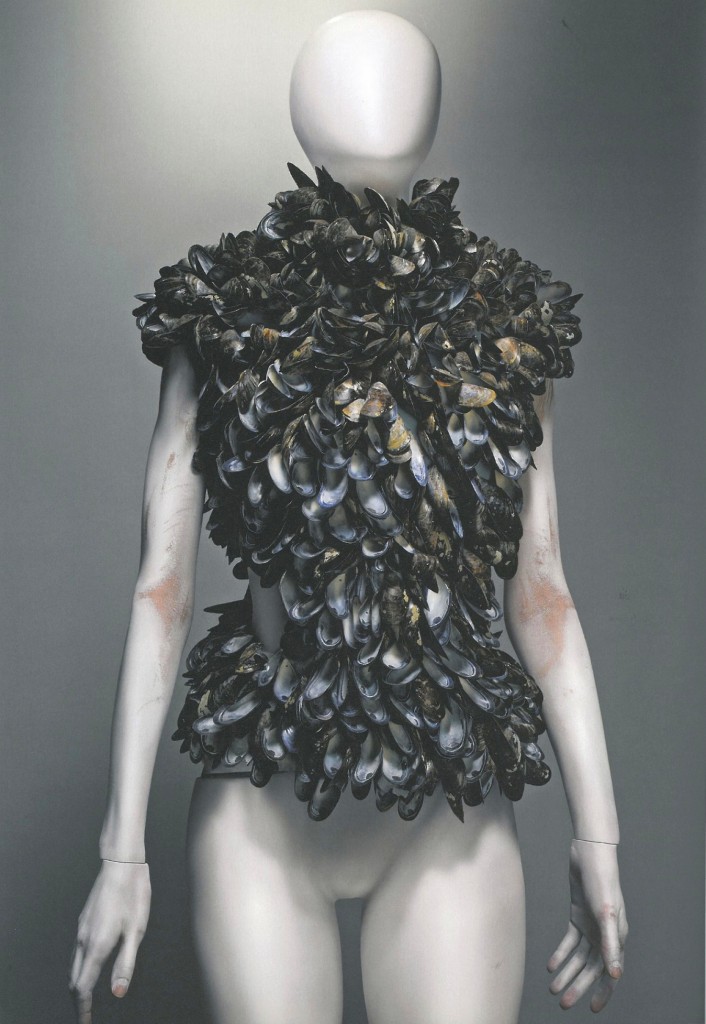It’s not surprising that Alexander McQueen would be drawn to materials that decay, he had a well documented fascination with romantic themes. He explored notions of death and decay and more broadly CHANGE in many ways, sometimes by utilizing references like the Salem witch trials, the murder of Russian royals, the films of Alfred Hitchcock, Poe’s classic symbol of the raven, but he also turned to materials that in and of themselves embodied time and change. His use of materials referenced many things, for example the video of Sam Taylor Wood, evolution and Charles Darwin, climate change, and weather.
- See also the Metropolitan Museums site for his exhibition Savage Beauty
- See also this summary of McQueen’s collections from 1992 – 2009
Dress, Sarabande, spring/summer 2007
The inspiration: “This is inspired by a video by the artist Sam Taylor-Wood. She’s a photographer and video artist, and over a period of time [she filmed] a bowl of fruit that began to rot.”
The outcome: “This is [the finale dress] from a collection called Sarabande, and it’s made of both silk and real flowers. As the model walked on the catwalk, the real flowers were dropping off the dress. McQueen loved nature—it was an ongoing theme in his work. The idea was the concept of how, over time, nature deteriorates, whether it’s flowers or fruit. It was a very melancholic approach, and a very deeply romantic approach.”
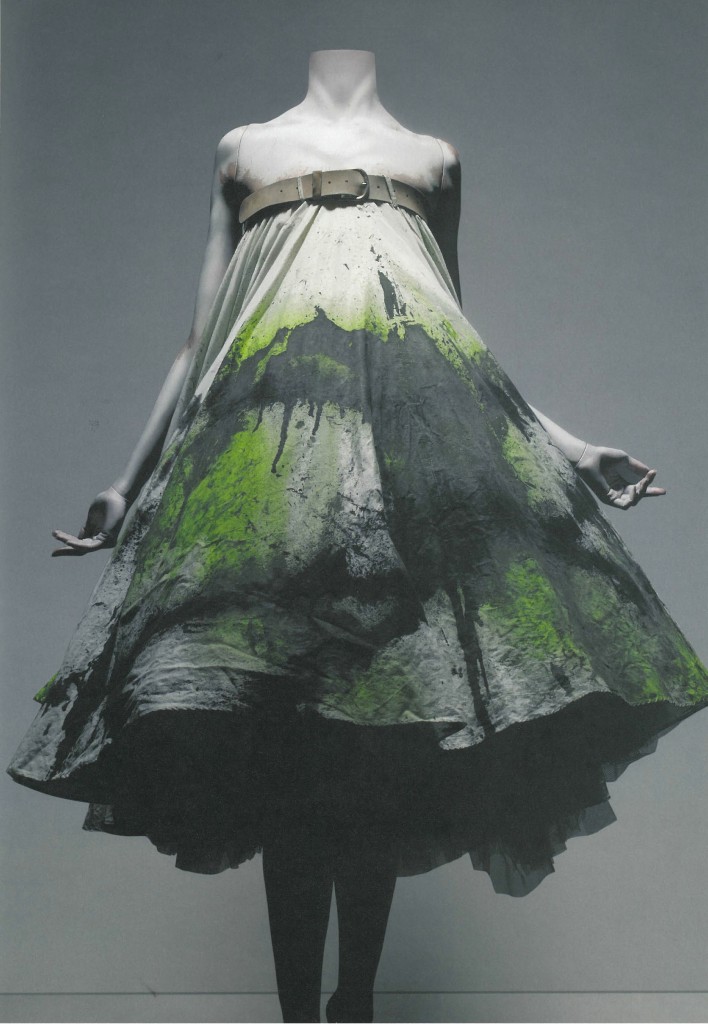
Dress, No.13, spring/summer 1999. White cotton spray-painted black and yellow with underskirt of white silk.
Dress, No. 13, spring/summer 1999
The inspiration: “No. 13 was inspired by the Arts and Crafts movement. The inspiration came from the artist Rebecca Horn. She had one installation where two machine guns were firing blood-red paint at each other.”
The outcome: “This dress was the finale to that particular collection, worn by the model Shalom Harlow, who was on a turntable, rotating like a ballerina. Next to her were two industrial robotic paint-sprayers. As she rotated, they shot out paint and sprayed the dress in a graffiti-like way. McQueen was very well-known for these spectacles on the runway, but this was his first big gag. The finales often had these sublime moments that would completely create this idea of awe and wonderment in his audience.”
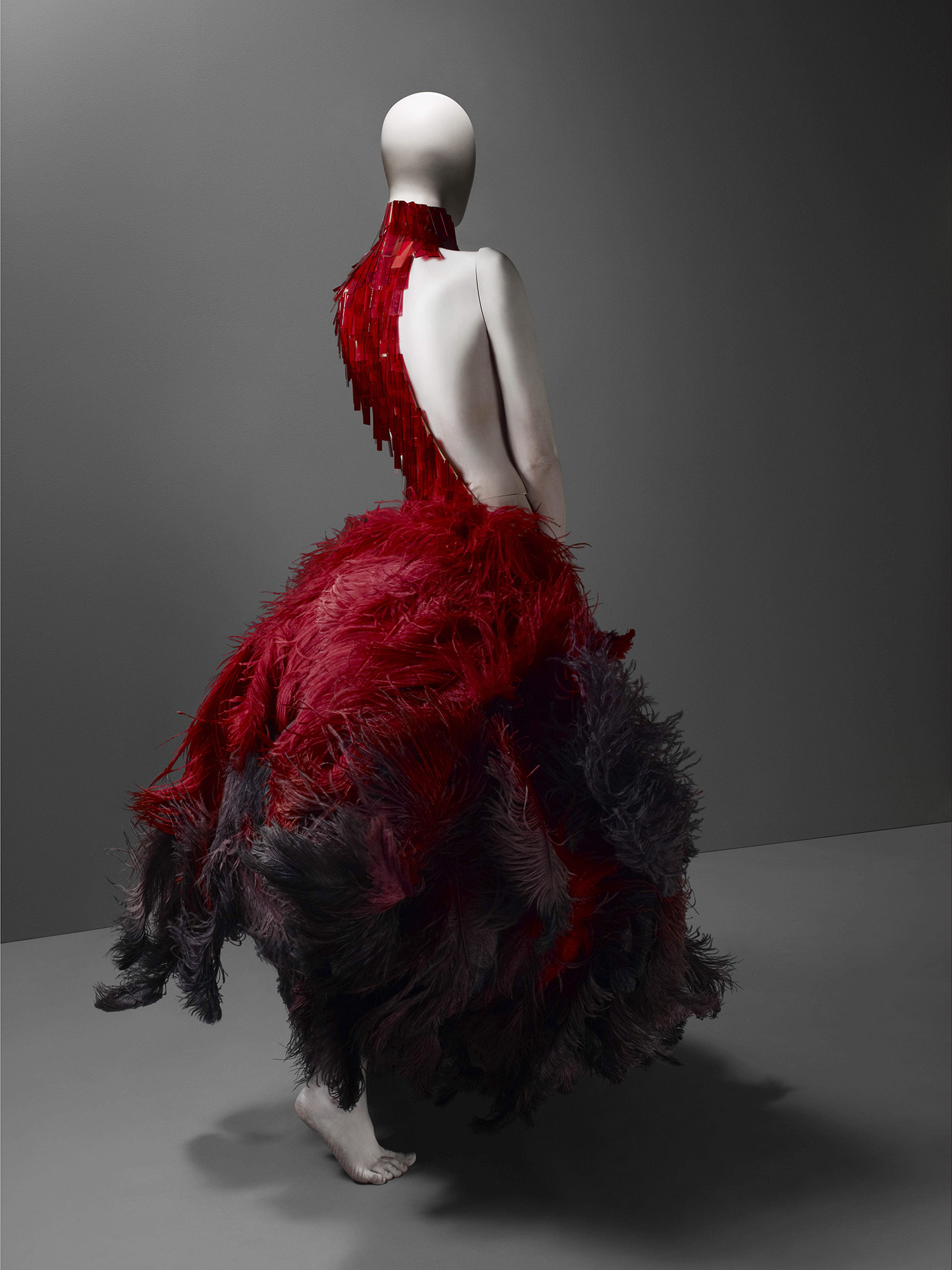
Dress, VOSS, spring/summer 2001
Dress, VOSS, spring/summer 2001
The inspiration: “[Picture] two surgical slides with a blood sample in between them: That’s what McQueen is referencing. But here [on the bodice], they’re painted red. The Victorian was something he revisited—and ideas of death, decay, dereliction.”
The outcome: “The bodice is made up of hundreds of microscopic surgical slides that are painted red. The underpinnings of this collection were about challenging conventional or normative ideals of beauty—McQueen prompted beauty based on ideas of difference and distinction. He had a saying that it was the ugly things in life that inspired him, rather than the beautiful things.”
Dress, Irere, spring/summer 2003
The inspiration: “McQueen loved the idea of storytelling; every one of his collections told [one]. The story for this was a shipwreck at sea, and the subsequent landfall in the Amazon. [I’ve] called this ‘the oyster dress.'”
The outcome: “The dress is made up of hundreds and hundreds of layers of organza that have been left unfinished, so you have this very deconstructed feel about it. It has the 1890s silhouette, with a corseted body, but it also has these layers of chiffon coming off the side of it, like sea kelp. It’s almost like she fell into the sea.”
Dress, The Horn of Plenty, autumn/winter 2009–10
An ensemble that’s made out of duck feathers dyed black, which gives the impression of a raven. A raven was a Romantic symbol of death. It’s an item that’s very melancholic but also very romantic at the same time. It came from a collection called The Horn of Plenty. And The Horn of Plenty was a collection that was very much inspired by the 1950s haute couture. And you even see the silhouette here; you see the very nipped-in waist, the huge shoulders. McQueen loved a very hard shoulder and a very small waist. So even in this particular garment—even though it seems so extreme—he’s still referencing 1950s couture. He’s still playing with the proportions that he loved so much.
And feathers play such an important role in McQueen’s work. He loved birds. And feathers was a material that he would revisit again and again in his work.
In McQueen’s Words“It is important to look at death because it is a part of life. It is a sad thing, melancholy but romantic at the same time. It is the end of a cycle—everything has to end. The cycle of life is positive because it gives room for new things.”
Dress VOSS, spring/summer 2001
Razor-clam shells stripped and varnished
Courtesy of Alexander McQueen
Photograph © Sølve Sundsbø / Art + Commerce
In McQueen’s Words
“My friend George and I were walking on the beach in Norfolk, and there were thousands of [razor-clam] shells. They were so beautiful, I thought I had to do something with them. So, we decided to make [a dress] out of them. . . . The shells had outlived their usefulness on the beach, so we put them to another use on a dress. Then Erin [O’Conner] came out and trashed the dress, so their usefulness was over once again. Kind of like fashion, really.”


